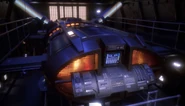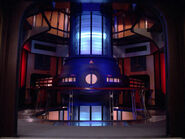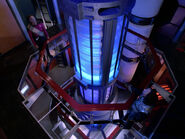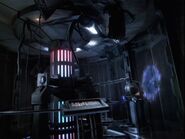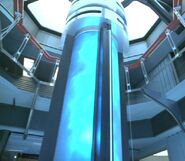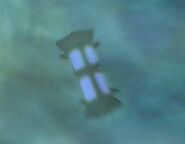Pseudohuman (talk | contribs) m (edits) |
m (stuff) |
||
| Line 22: | Line 22: | ||
<gallery captionalign="left"> |
<gallery captionalign="left"> |
||
File:NX class warp core.jpg|The warp core of an {{class|NX}} starship |
File:NX class warp core.jpg|The warp core of an {{class|NX}} starship |
||
| − | File:USS Enterprise (alternate universe) warp cores.jpg|Multiple warp cores of the |
+ | File:USS Enterprise (alternate universe) warp cores.jpg|Multiple warp cores of the {{class|Constitution|alternate reality}}<br />([[alternate reality]], [[2258]]) |
| − | File: |
+ | File:Constitution class warp core exterior, alternate reality.jpg|The exterior of the warp core of the ''Constitution''-class<br />(alternate reality, [[2259]]) |
| + | File:Constitution class warp core interior, alternate reality.jpg|The interior of the warp core of the ''Constitution''-class<br />(alternate reality, 2259) |
||
File:Constitution original engineering2.jpg|The warp core of a {{class|Constitution}} starship ([[2266]]) |
File:Constitution original engineering2.jpg|The warp core of a {{class|Constitution}} starship ([[2266]]) |
||
File:Constitution class refit engineering.jpg|The warp core of a {{class|Constitution}} refit starship ([[2270s]]) |
File:Constitution class refit engineering.jpg|The warp core of a {{class|Constitution}} refit starship ([[2270s]]) |
||
Revision as of 19:26, 1 October 2013
AT: "xx"

The internal location of a Galaxy-class warp core
Warp core is the common designation for the main energy reactor powering the propulsion system on warp-capable starships. During the 22nd century, warp reactors aboard NX-class starships were technically known as the "Gravimetric Field Displacement Manifold". (ENT: "Cold Front") The reactor had eight major components. (ENT: "Desert Crossing") A less common name for this core was antimatter reactor core. (TNG: "Booby Trap", display graphic)
On Federation starships, the warp core usually consists of a matter/antimatter reaction assembly (M/ARA) utilizing deuterium and antideuterium reacting in a dilithium crystal matrix which produces a maximum output of 4,000 teradynes per second. (VOY: "Drone")
22nd century warp cores were designed as oblong cylinders connected by pylon conduits directly into the warp nacelles. (Star Trek: Enterprise) In the 23rd century, the warp core was not situated in the main engineering. The main warp reaction occurred in a dilithium crystal converter assembly which consisted of two flattened rounded nodules situated directly in front of the warp plasma conduits to the warp engines, which were behind a large metal grate. (Star Trek: The Original Series; ENT: "In a Mirror, Darkly, Part II") By 2270, most Federation warp cores were redesigned to consist of a large warp core unit in the secondary hull with matter and antimatter channeling into the core through vertical conduits, with the resulting energy directed to the nacelles through a horizontal conduit leading out from the rear of the core. (Star Trek: The Motion Picture)
As a safety precaution, the core could be physically ejected from the ship, should an event such as a catastrophic containment failure of the matter-antimatter reaction occur that cannot be corrected. There were also some tactical uses for ejecting and detonating a core on purpose. The detonation could for example be used to neutralize the cascade of a subspace tear or push a ship away from the gravity well of a black hole. (TOS: "That Which Survives"; TNG: "Cause and Effect", "All Good Things..."; VOY: "Cathexis", "Day of Honor", "Renaissance Man"; Star Trek: Insurrection; Star Trek)
Antimatter containment is achieved through the use of magnetic fields, which guide and direct the antimatter through the antimatter engine to injector coils, which precisely compresses and streams the antimatter into the form which enters the dilithium articulation frame. Deuterium, stored in the ship or attracted by the Bussard collectors, is funneled in a stream from the opposite deuterium injector. The molecules enter the lattice matrix of the crystallized dilithium, reacting within it and releasing a tuned energy stream in the form of electro-plasma, a highly energetic form of plasma. The electro-plasma is carried by magnetic plasma conduits throughout the power transfer system. In the Federation power transfer grid, this is the electro-plasma distribution network, comprised of EPS conduits and EPS taps. The most energized stream created is the warp plasma, which exits in twin power transfer conduits connected to the warp nacelles. (ENT: "Cold Front", "These Are the Voyages..."; Star Trek: Insurrection)
During the 23rd century, dilithium crystals were also used in Klingon warp reactions to generate energy at sufficient levels to enable warp flight. In the late 24th century, Klingon reactors used a tritium intermix, a feature not included in Federation and Romulan ships of the same era. (DS9: "When It Rains...") On Romulan starships, a completely different approach was used; an artificial quantum singularity in the warp core was used to harness the energy necessary to power warp flight. (TNG: "Timescape")
Warp cores on starships left resonance traces, allowing for the ability to track vessels. (VOY: "Caretaker")
A warp core could be towed at warp using a tractor beam if calibrated properly. (VOY: "Day of Honor", "Renaissance Man")
Gallery
(alternate reality, 2259)
(alternate reality, 2259)
Further references
- DS9: "The Visitor"

